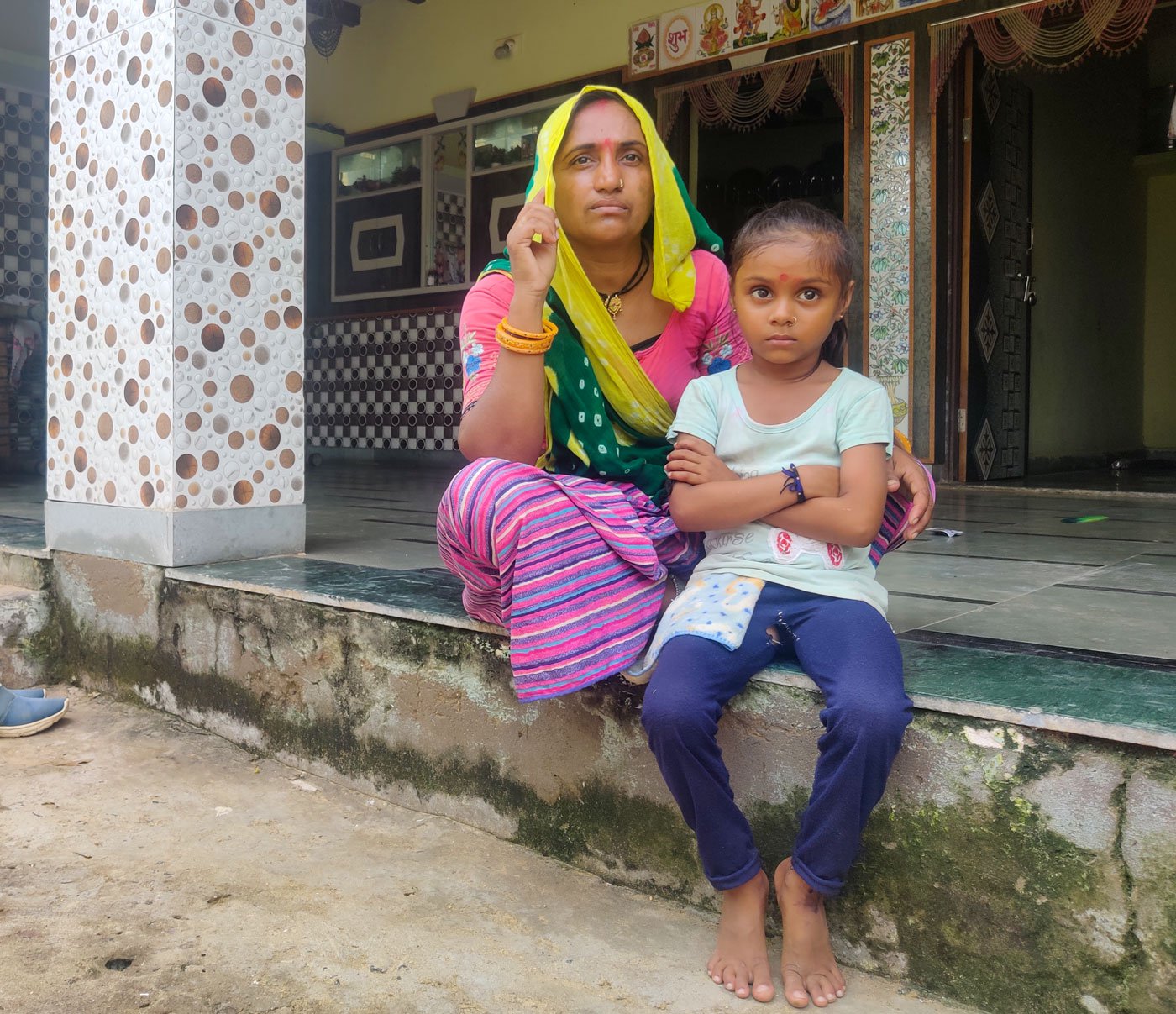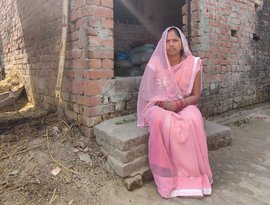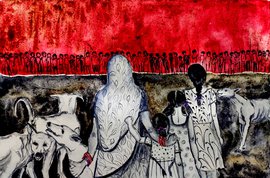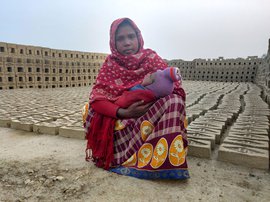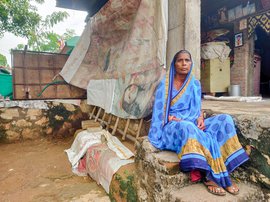It has been a year since Bhanuben Bharwad visited her 2.5-acre farmland in Banaskantha district. There was a time when she and her husband went there every day, to cultivate the food that they would consume during the year – bajra , moong and jowar . The farm was their main source of sustenance until the calamitous floods in Gujarat in 2017, which destroyed their patch of land. “Our diet changed after that,” says Bhanuben, 35. “We had to start buying the crops that we used to grow in our farm.”
Half an acre of bajra in her farmland would yield about four quintals (400 kilos) of the pearl millet. If she were to buy it now, the same quantity would cost her close to Rs. 10,000 at the mandi . “Even taking inflation into account, our [input] costs to cultivate half an acre of bajra would be half of the market rate,” she says. “The calculation for other crops is similar. The price is double for every crop [we used to grow].”
Bhanuben, her husband Bhojabhai, 38, and their three children live in Totana village of Banaskantha’s Kankrej taluka. When they still tilled their land, Bhojabhai would also work as an agricultural labourer to earn an income. But he’s had to work as a labourer full time since 2017 – in farms nearby and at construction sites in Patan, 30 kilometres away. “He is out looking for work even now. He earns about 200 rupees a day when he finds work,” says Bhanuben.
Suhana, Bhanuben and Bhojabhai’s youngest child, was born the same year as the ruinous floods. Caressing her forehead, Bhanuben says she can’t believe it’s been five years already.
Many districts of Gujarat, including Banaskantha, Patan, Surendranagar, Aravalli and Morbi, recorded extremely heavy rainfall in July 2017. The deluge was brought on by low-pressure systems of both Arabian Sea and Bay of Bengal that had formed at the same time. It was a rare phenomenon. According to a report of National Disaster Management Authority , it was the highest rainfall that the area had received in 112 years.
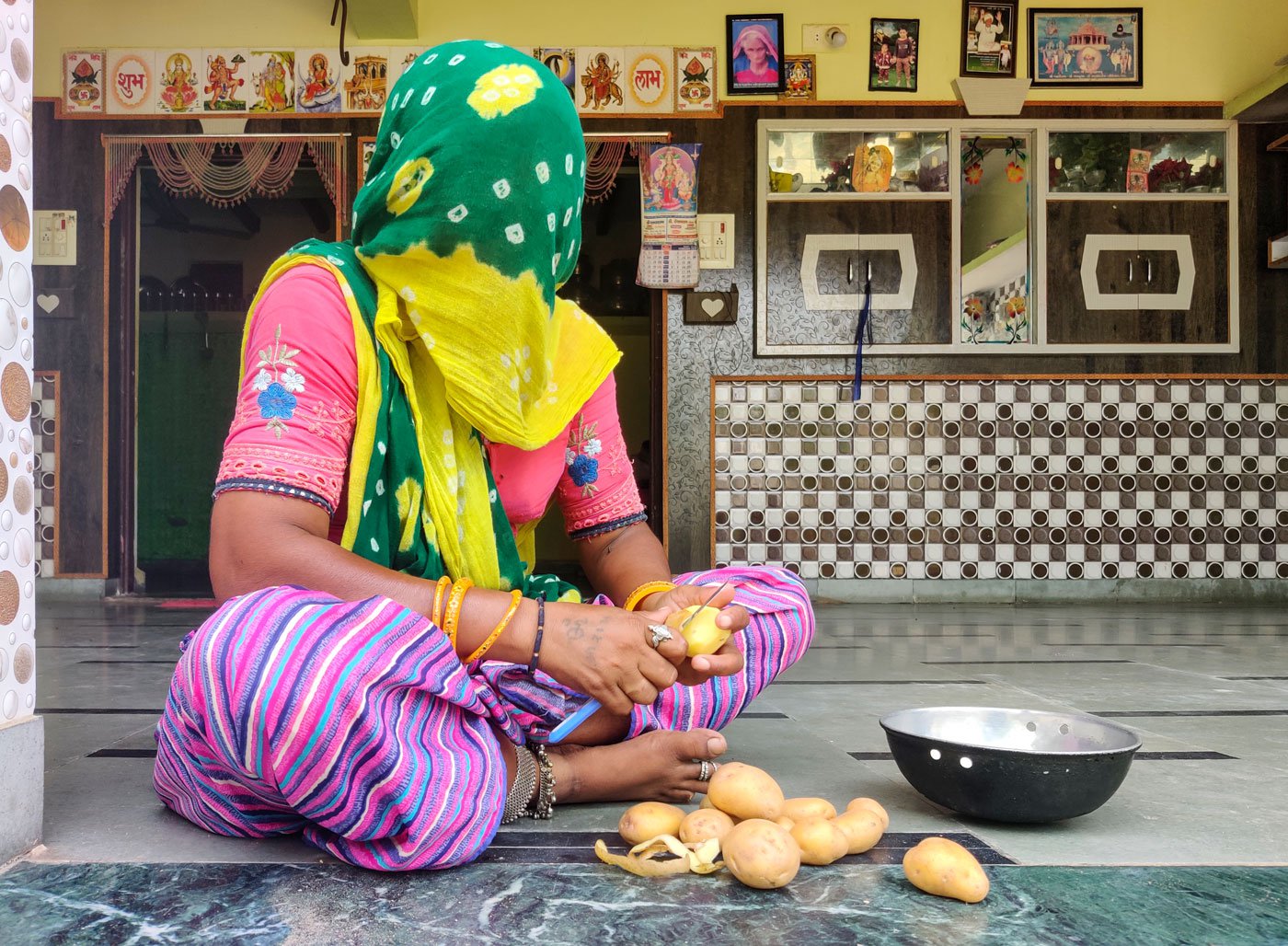
Left: Bhanuben Bharwad with her daughter, four-year-old Suhana, outside their home in Totana village of Banaskantha district. Right: While slicing potatoes Bhanuben explains how their farmland was entirely under water in the 2017 floods
About 163 per cent of the annual average rainfall of Banaskantha occurred from July 24 to 27 that year – as against the normal 30 per cent in all of July. This led to water logging, overflow of dams, and flash floods. Things got worse when the Narmada canal breached near Khariya village – adjacent to Totana – in Kankrej taluka.
At least 213 people died in the state due to the floods. And nearly 11 lakh hectares of agricultural land and 17,000 hectares of horticulture area were affected.
“Our entire farmland was under water,” Bhanuben remembers, slicing potatoes outside her home. “The flood water brought a whole lot of sand with it. Though it receded a few days later, the sand settled with the soil.”
It has been impossible to sift the sand from the soil. “The floods made our land infertile,” she says.
With wage labour being the only source of food on the table, Bhanuben’s family is no longer able to afford a balanced meal consisting of carbohydrates, proteins and vegetables. Little Suhana has barely had one since she was born. “We used to buy only vegetables or fruits, and milk, because we had the grains,” she explains. “Now we have to cut down on all of those things.”
“I don’t remember the last time we bought an apple,” she says. “Even if we could afford one today, we are never sure if we will get work tomorrow. So we save the extra money. Our meal is mostly
dal,
rice and
roti.
Earlier, if we made
khichdi
, we mixed 500 grams of
dal
for every kilo of rice [proportionately]. These days, it’s just 200 grams or so. We must fill our stomach somehow.”
However, the dietary imbalance has had undesirable repercussions like malnourishment, which poses more problems.
Suhana is often exhausted and her immunity isn’t great, her mother says. “She can’t play as much as the other kids around her and gets tired sooner than them. She falls sick often, too.”
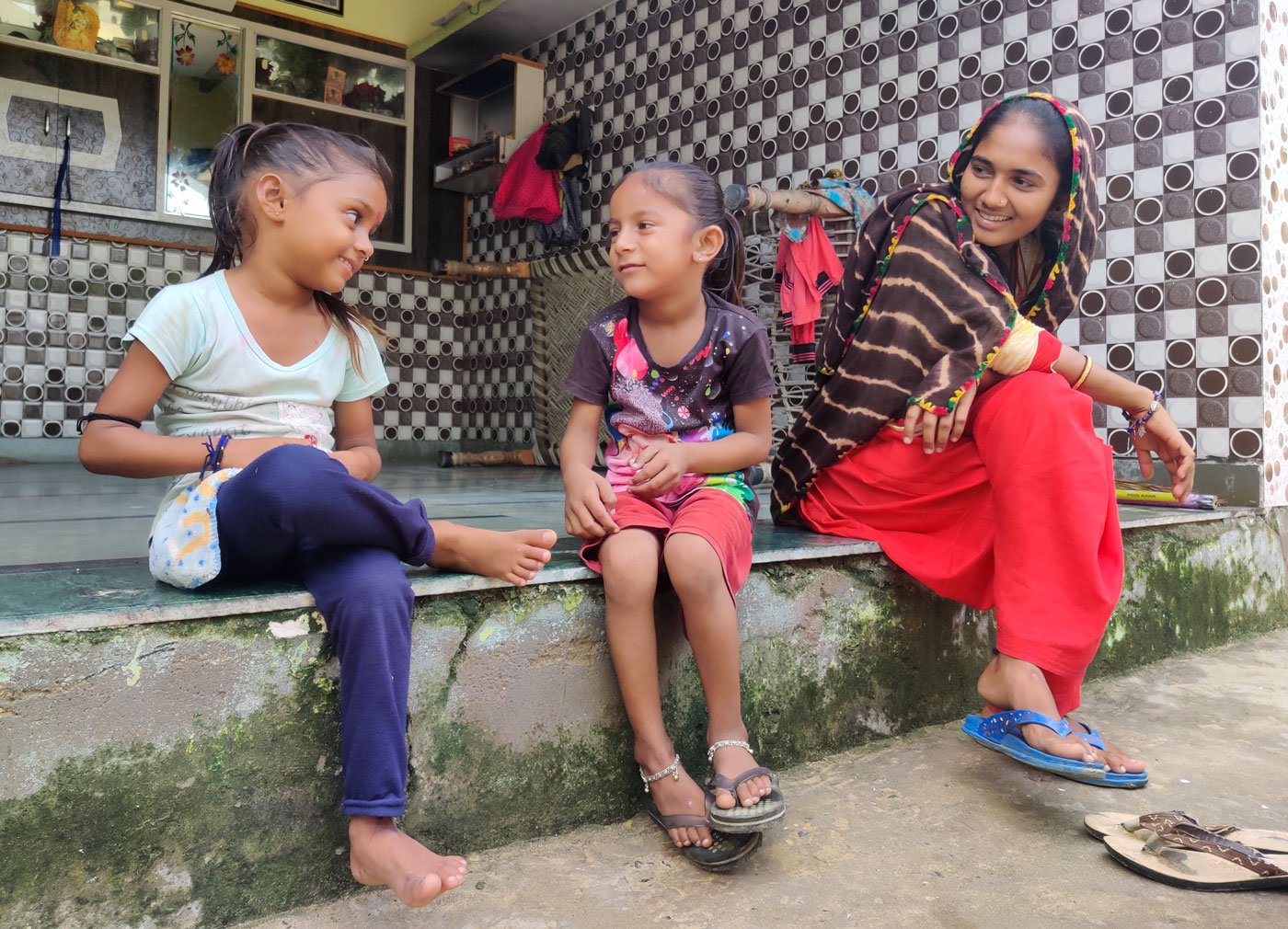
Suhana (left) chatting with her friend Mehdi Khan (centre). They were among the 37 children under five years who were found to be malnourished during a survey in their village in 2021
A health survey of children in Totana conducted in June 2021 showed that Suhana was malnourished. She was one of 37 children with malnutrition out of 320 – all under five years of age – who were surveyed in the village. “Data of the children’s height, weight and age were collected and analysed,” says Mohan Parmar, an activist with Navsarjan Trust, a human rights organisation in Gujarat that had conducted the study across Banaskantha district.
Banaskantha was in the top five ‘highest burden districts’ list – along with Ahmedabad, Vadodara and Surat and others – for almost every public health indicator in 2019-20, according to a
data note
on Gujarat’s nutritional profile prepared by POSHAN Abhiyaan.
The note, which draws data from National Family Health Survey 2019-21 (
NFHS-5
), shows that out of 23 lakh (2.3 million) under-five children who were underweight in Gujarat, 17 lakhs were in Banaskantha. The district has 15 lakh children who are stunted (short for their age) and close to 1 lakh kids who are wasted (low weight for their height) – 6.5 per cent and 6.6 per cent of the state’s total respectively.
One of the fallouts of poor nutrition is anaemia, which is highest in Gujarat among all the states of India: 80 per cent. About 2.8 lakh children under five years are anaemic in Banaskantha.
Without access to sufficient food, the health of children like Suhana and their families are at risk. And extreme events triggered by climate change are making a grave situation worse.

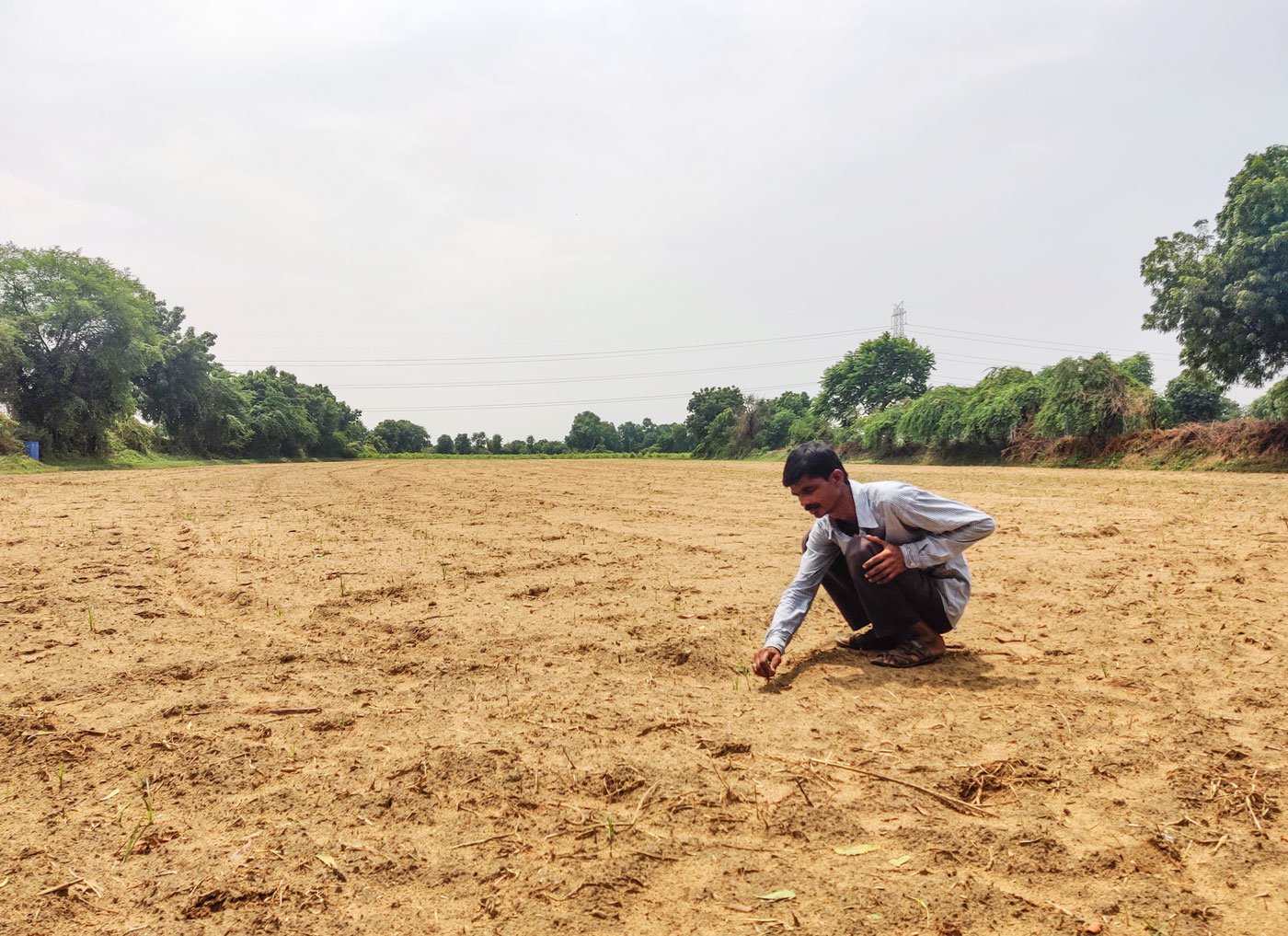
Left: Alabhai Parmar with his three-year-old grandson, Yuvraj, at their home in Sudrosan village. Right: A farm in Totana where sand has settled with the soil
Alabhai Parmar, 60, lost four crops during the monsoon this year. “I sowed the crops, and the heavy rains washed them away,” he says, sitting in his home in Sudrosan village, Banaskantha district. “We had [planted] wheat, bajra and jowar . I lost more than Rs. 50,000 of input costs.”
“You can’t predict the weather these days,” says Alabhai, adding that farmers are experiencing a drop in production. It’s compelling them to work as farm labourers, he says. “Even though we own 10 acres of farmland, my son is forced to work as a labourer in someone else’s farm or at construction sites.”
Farming was not so stressful even 15-20 years ago, remembers Alabhai. “We had problems,” he says. “But excessive rain was not as common; there isn’t light rain at all anymore. How can you get a proper harvest in these circumstances?”
The total crop area of foodgrains (cereals and pulses) in Gujarat declined from 4.9 million to 4.6 million (49 lakh to 46 lakh) hectares in the decade of 2010-11 to 2020-21. And though the area under rice cultivation increased by almost 100,000 hectares, cereals like wheat, bajra and jowar lost ground in this period. In Banaskantha, the crop area under bajra , the cereal grown most in the district, reduced by almost 30,000 hectares.
Overall, production of cereals – mainly millets and wheat – in Gujarat fell 11 per cent during the decade, while pulses grew 173 per cent.
It explains why the families of Alabhai and Bhanuben have
dal
and rice for most of their meals.
Pankti Jog, an RTI activist in Ahmedabad working on right to food, says that farmers have been shifting to cash crops (tobacco, sugarcane). “It affects the food intake and food security of the family,” she says.
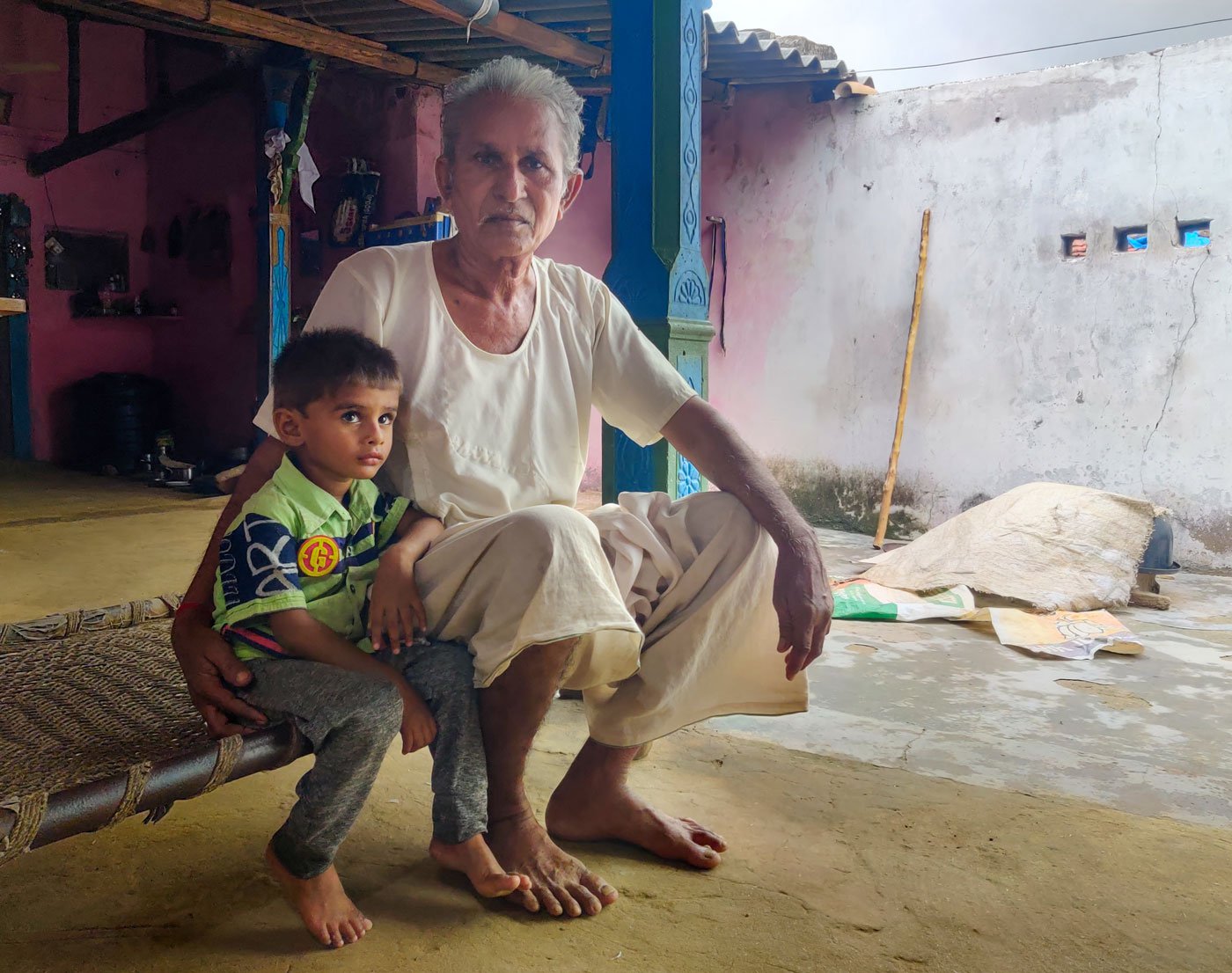
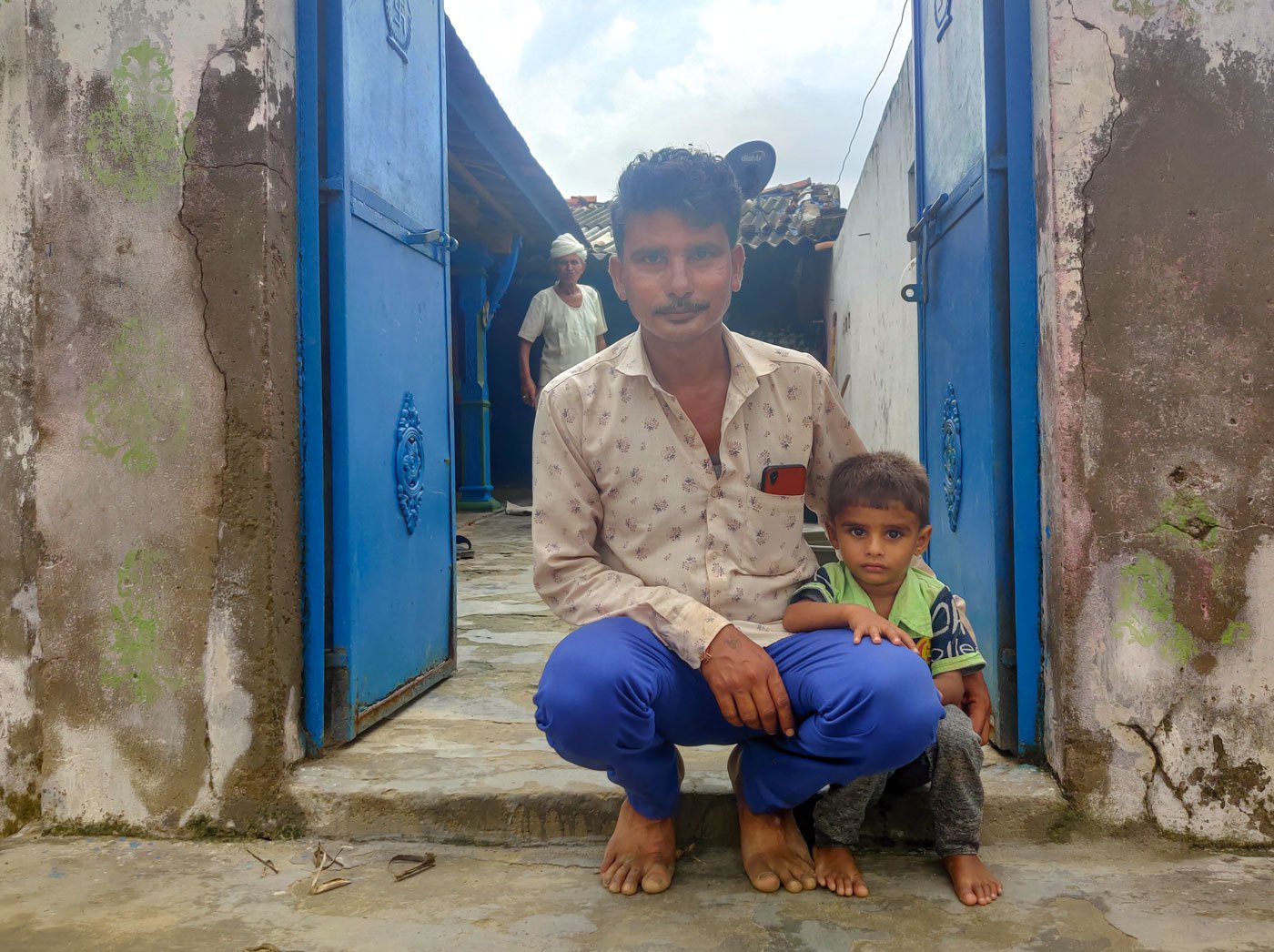
Left: Alabhai worries about Yuvraj, who is underweight and has weak immunity. Right: Yuvraj with his father at their home
High inflation keeps Alabhai from buying cereals and vegetables. “When farming happens regularly, even the livestock get fodder,” he says. “We lose out on fodder if the crop fails, and we need to purchase it along with food in the market. So we buy what’s affordable.”
Alabhai’s three-year-old grandson Yuvraj is underweight. “I worry about him because his immunity is weak,” he says. “The nearest government hospital is more than 50 kilometres from here. What do we do if he needs urgent treatment?”
Jog says, “Children with malnutrition are at higher risk of diseases,” adding that people go to private hospitals because of the poor public health infrastructure in the state. “Families are burdened with health expenses,” she says. “In tribal areas [such as Banaskantha], it is one of the major reasons behind mortgages [i.e. debt].”
Local food habits are not considered by the food schemes being implemented in the state, adds Jog. “You can’t have one fit for all. The dietary preferences of people differ from region to region and community to community,” she says. “There is also a campaign to discourage non-vegetarian food in Gujarat. It has infiltrated into areas where people used to eat non-vegetarian food and eggs regularly. They now think it’s sacrilege.”
According to the Comprehensive National Nutrition Survey of 2016-18, 69.1 per cent of mothers/caregivers in Gujarat had a vegetarian diet as opposed to the national average of 43.8 per cent. Among kids aged 2-4 years, only 7.5 per cent had access to eggs, a rich source of protein. Though 17 per cent of the children between 5-9 years ate eggs in the state, that number is still low.
Parth M.N. reports on public health and civil liberties through an independent journalism grant from the Thakur Family Foundation. The Thakur Family Foundation has not exercised any editorial control over the contents of this reportage.
